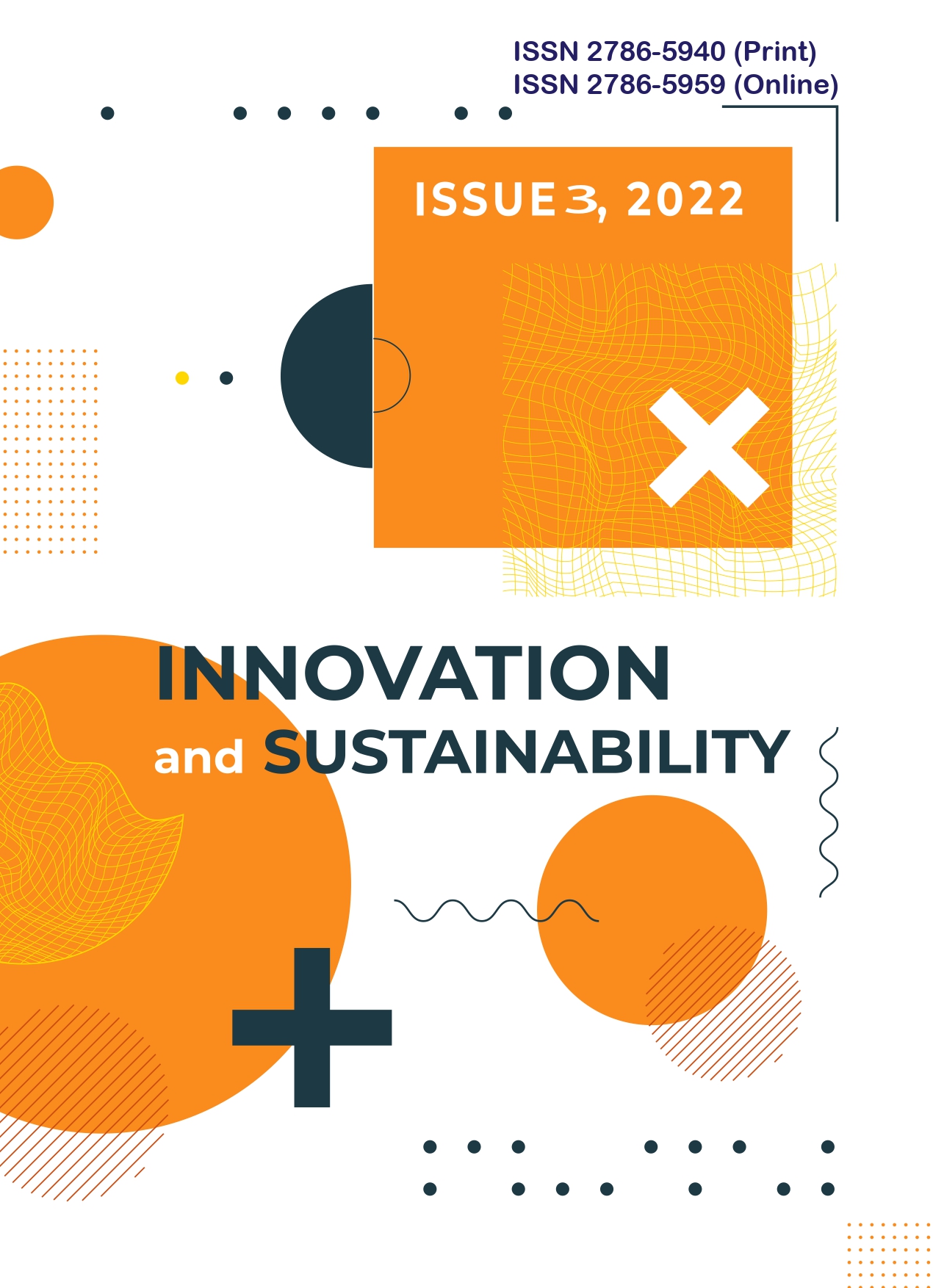DIGITAL TRANSFORMATION OF CYBER SECURITY AT THE MICRO-LEVEL UNDER MARTIAL STATUS
DOI:
https://doi.org/10.31649/ins.2022.3.26.37Keywords:
digital transformation, cybersecurity, micro level, cyber-attacks, cyber threats, cyber hygieneAbstract
The article describes the possible transformational processes of cybersecurity of business entities in martial law. Authors argue that the security criteria of modern digital entrepreneurship include the following mandatory facts: data must always be encrypted during storage and transmission; encryption must take place at the client level; only the client should have access to the encryption keys; actual data should not be transmitted through open mail channels; the company must control the storage of encrypted information and access keys to it.
A number of current external and internal threats to doing business are listed, including network intrusion, loss of devices with saved passwords, and encryption viruses. Main tasks of enterprises in terms of cybersecurity, namely: identification of potential threats to cybersecurity of enterprises and vulnerabilities; cyber incident prevention; neutralization or minimization of threats to information security of the enterprise.
Authors consider the impact of the information security management system ISO / IEC 27001: 2013 on the work of organizations. It has been found that this system provides an opportunity to implement best practices to improve data protection and eliminate the threat of security breaches of information systems.
The article focuses on the fact that in the framework of cybersecurity in martial law and in the further digitization of activities at the micro level, the basic and priority tasks should be mainly new quality of production processes of technological laboratories: planning work in accordance with requirements industry standards, guidelines and best practices; sampling into the system by assigning it a specific identifier; calculation of results and their design.
Entrepreneurial practice shows that, for example, Ramsomware is the most common threat in the implementation of business processes. Ramsomware is divided into two main types – cryptographers (“cryptoransomware”) and blockers (blockers –“blockers”). Encryptors, when they get to the main computer of the enterprise, encrypt valuable files such as documents, photos, databases. Ramsomware’s business threats include, for example, temporary data loss, which can completely disrupt critical business processes; constant data losses, leading to a decline in the company’s competitiveness, reduced sales revenue in the long run, disrupted continuous access to data.
Authors of the article came to the conclusion that in the light of such criminal cyberattacks, of course, it is logical to develop various types of protection in order to protect data from their interception. This protection must be: invisible to the naked eye; have a secure mail channel; e-mail certificate; e-mail safe; e-mail shredder; cybersecurity center; encryption of letters and attachments; protected view.
References
Viter, S. and Svitlyshyn, I. (2017) Zakhyst oblikovoi informatsii ta kiberbezpeka pidpryiemstva [Protection of accounting information and cybersecurity of the enterprise], Ekonomika i suspilstvo, vol. 11, pp. 497–502.
Desiatko, A.M. (2020), Kibergigiena. Kiberbezpeka. Bezpekaderzavy [Cyberhygiene. Cybersecurity. State security], KNTEU, Kyiv, Ukraine.
Drozd, I. and Makovets, O. (2020) Kiberbezpeka yak faktor finansovoi bezpeky pidpryiemstva [Cybersecurity as a factor of financial security of the enterprise], Ekonomika. Finansy. Pravo, no. 5/3, pp. 31–35.
Kohut,Yu.I. (2019) Kiberbezopasnost tsyfrovoi ekonomiki dlia sobstvennikov biznesa [Cybersecurity of digital economy for business owners].LLC “Consulting company “SIDCON”, Kyiv, Ukraine.
Kraus, K. M., Kraus, N. M. andManzhura, O.V. (2021), Elektronna komertsiya ta Internet-torhivlya [E-commerce and Internet commerce], Agrar Media Hryp, Кyiv, Ukraine.
Kraus, K. M. and Kraus, N. M. (2019) Retrospektyva I suchasnist opodatkuvannia Ukrainy ta za kordonom [Retrospective and modern taxation in Ukraine and abroad], Agrar Media Hryp, Кyiv, Ukraine.
Kraus, N. M. and Kraus, K. M. (2018) Tsyfrovizatsiia v umovakh instytutsiinoi transformatsii ekonomiky: bazovi skladovi ta instrumenty tsyfrovykh tekhnolohii [Digitalization in the conditions of institutional transformation of economy: basic components and tools of digital technologies], Intelekt ХХІ stolittia, vol. 1, pp. 211–214.
Kraus, N. M. (2019), Innovatsijna ekonomika v hlobalizovanomu sviti: instytutsional’nyj bazys formuvannia ta traiektoriia rozvytku [Innovative economy in a globalized world: institutional basis of formation and development trajectory], Agrar Media Group, Kyiv, Ukraine.
9. Kryvoruchko, O.V., Sunichuk, O.M. and Shvts, D.V. (2020), “Analysis of the state of security of information and telecommunication systems”, Uprzvlinniarozvytkomskladnykh system, no. 42, pp. 56–62.
On the basic principles of cybersecurity in Ukraine: Law of Ukraine from 24 October 2020, basis on 912-IX, Document 2163-VIII,available at:https://zakon.rada.gov.ua/laws/show/2163-19#Text
Raietskyi, A. (2022), Kiberbezpeka biznesu tse ne lyshe tekhnichni zakhody [Business cybersecurity is not just about technical measures], Legal IT group,available at:https://legalitgroup.com/kiberbezpeka-biznesu-tse-ne-lishe-tehnichni-zahodi.
Strategies for the future. A new era of digital transformation Central and Eastern Europe, DELOITTE,available at:https://www2.deloitte.com/content/dam/Deloitte/ua/Documents/research/c500/CETop500_2016_ua.pdf.
ISO/IEC 27032:2012. Information technology. Security techniques. Guidelines for cybersecurity”, ISO,available at:https://www.iso.org/standard/44375.html.
Kraus, K., Kraus, N. and Shtepa, O. (2021) Teaching Guidelines for Digital Entrepreneurship, Cracow University of Economics, available at: https://ted.uek.krakow.pl/output-1-teaching-guidelines.
Kraus, N., Kraus, K. and Osetskyi, V. (2020) New quality of financial institutions and business management, Baltic Journal of Economic Studies, vol. 6, vol. 1, pp. 59–66.
Kraus, K. and Kraus N. (2021) Digitalization of Business Processes of Enterprises of the Ecosystem of Industry 4.0: Virtual-Real Aspect of Economic Growth Reserves, WSEAS Transactions on Business and Economics, vol. 18, pp. 569-580. DOI: 10.37394/23207.2021.18.57.








